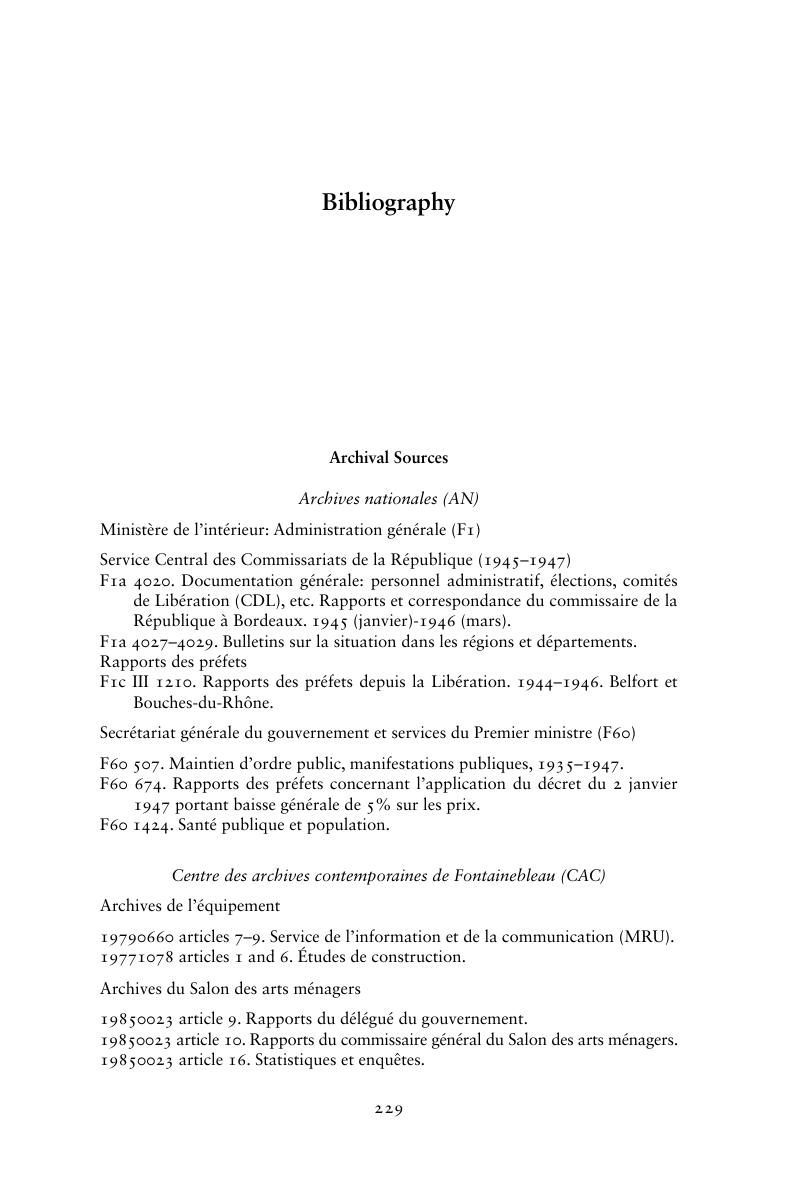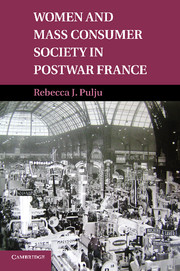Book contents
- Frontmatter
- Contents
- List of Figures and Tables
- Acknowledgments
- Abbreviations
- Introduction
- 1 Consumers for the Nation
- 2 The Productivity Drive in the Home and Gaining Comfort on Credit
- 3 For Better and For Worse
- 4 “Can a Man with a Refrigerator Make a Revolution?”
- 5 The Salon des arts ménagers
- Epilogue
- Bibliography
- Index
- References
Bibliography
Published online by Cambridge University Press: 01 March 2011
- Frontmatter
- Contents
- List of Figures and Tables
- Acknowledgments
- Abbreviations
- Introduction
- 1 Consumers for the Nation
- 2 The Productivity Drive in the Home and Gaining Comfort on Credit
- 3 For Better and For Worse
- 4 “Can a Man with a Refrigerator Make a Revolution?”
- 5 The Salon des arts ménagers
- Epilogue
- Bibliography
- Index
- References
Summary

- Type
- Chapter
- Information
- Women and Mass Consumer Society in Postwar France , pp. 229 - 254Publisher: Cambridge University PressPrint publication year: 2011

